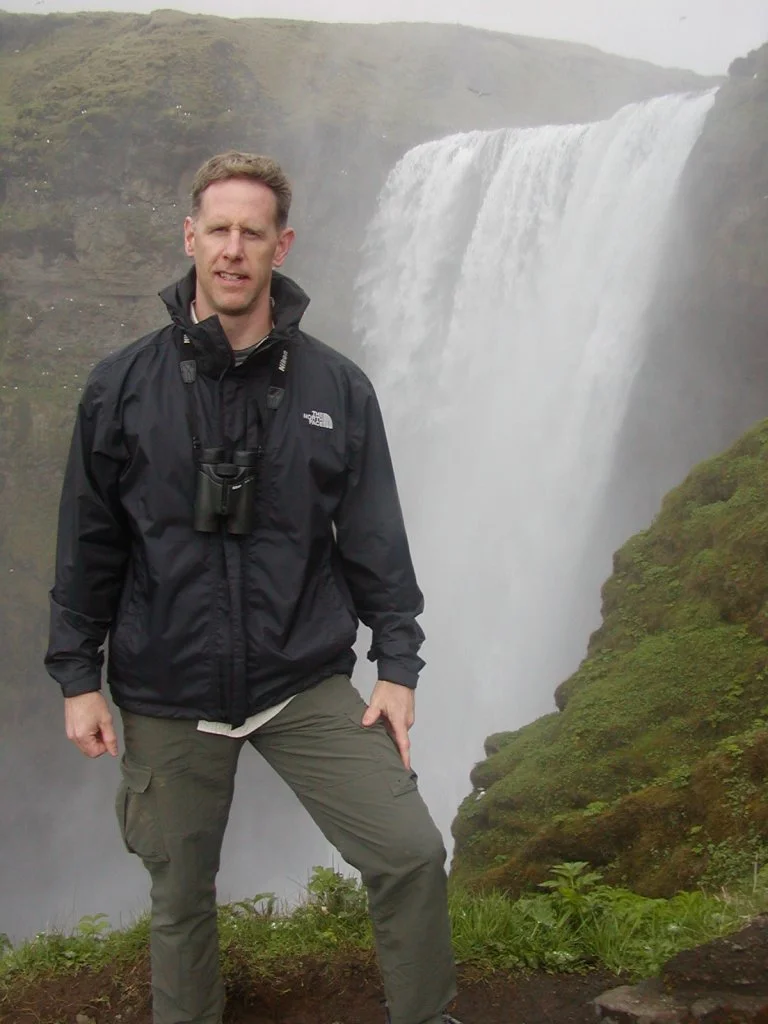How green solutions can make our coast and harbors more resilient | Q&A with The Trustees Director of Coast and Natural Resources, Tom O'Shea
With the impacts of climate change escalating around the globe, many coastal cities and communities are looking for ways to innovate and mitigate flooding and sea level rise. Green solutions—or nature-based methods—can help restore the 'natural infrastructure' of our coastal habitats, places that help protect nearby communities, jobs and businesses from storms and floods.
For The Trustees, this is an issue that hits close to home, as more than 30 of our statewide reservations lie along the coast, and we protect and care for 120 miles of the Commonwealth’s coastline—including recreational beaches, wildlife refuges, dune and marshland habitats, barrier beaches, as well as several historic estates.
As we seek to build a series of resilient parks along Boston’s vulnerable waterfront through our One Waterfront Initiative, our Director of Coast and Natural Resources Tom O’Shea is working on important assessments and innovative projects that will protect many of our coastal assets outside of the city as well—and hoping they can serve as a model. The methods being used in these projects employ nature-based solutions as a complement or alternative to built infrastructure, which can more sustainably (and sometimes more cost-effectively in the long run) soften the impacts of climate change to our communities.
Q: What is the Trustees doing to seek green solutions for its coastal properties?
A: At its core, the mission of The Trustees is to protect and care for special places while engaging people and communities in the discovery, care and enjoyment of our properties. We care for 117 very special places every day and our coastal properties are magnets, often our most visited, and frequently the properties that come to mind when people think of The Trustees. The coastal systems in and around these properties are also of extraordinary ecological value—containing some of new England’s rarest habitats and species—and are the sites most vulnerable to impacts of coastal storms, sea level rise, flooding and erosion. In 2017, The Trustees partnered with The Woods Hole Group on a forward-looking coastal vulnerability assessment (CVA) so that together with our visitors, volunteers, communities and partners, we can better protect and care for these coastal areas now and in the future—to be more resilient, to keep them open and accessible to the public, and to protect their fragile ecosystems, including wildlife species and habitats, for all to enjoy. Through our coastal initiative we have been focusing on land protection and advocacy where we can have the most strategic and long-lasting impact as we continue to face future threats to our coast.
Q: What lessons are we learning about using these resilient, sustainable solutions at some of our properties around the state?
Existing Argilla Road culvert
A: We have two important projects underway on the North Shore. In one, we are working with The Woods Hole Group and the Town of Ipswich to design a nature-based, green infrastructure solution for Argilla Road access to Crane Beach—as it’s a road that our CVA predicted will go under water between 2030 and 2070. The project is designed to protect public access to Crane Beach by restoring the flow of water underneath and in the surrounding natural salt marsh, helping it keep pace with sea-level rise. As part of the project we will work to both stabilize and revegetate the road banks, to help accommodate and recover from storm surge energy while protecting the banks with natural vegetation. Without roots holding the banks in place, solid rocks or material can be scoured more easily. Plus, vegetation will add to the benefits of nearby salt marsh habitat. Additionally, by resizing and replacing the existing culvert with a larger culvert using future projections of increased tidal flow from sea level rise, we can remove the existing tidal restriction and allow a full range of tidal flow under the road to the upstream areas, which will expand existing salt marsh. Raising the elevation of the road will also avoid the projected daily tidal flooding of this critical access area for 350,000 visitors annually to Crane Beach.
Ditches in the Great Marsh (Old Town Hill, Newbury)
Our second project is working to help nature “heal” the Great Marsh, the largest saltmarsh in New England. This ecosystem has been compromised by historic ditching, which affects its ability to drain and is causing it to sink over time. When healthy, the natural plants, species and overall habitat of the marsh act as a natural buffer to flooding and can help protect nearby jobs, homes, and other important infrastructure. The first phase of this project, which includes braiding and layering salt marsh hay to help rebuild the ditches and their natural hydrology, is taking place at our Old Town Hill property in Newbury over the summer and fall, and will expand to Ipswich and Essex. We intend to share what we learn so that the innovative techniques we’re using can be replicated at other marsh properties across the state, and even nationally.
Q: How are these projects resonating with the community?
We’re finding that there is much energy and interest from our state and community partners for coastal resilience and open space protection, but not everyone knows where and how to start. We’re also learning that having the right people at the table is critical. Our partners are an invaluable part of the process and a lot of what we are doing is a test of existing regulations and permits, which haven’t necessarily kept up with new resilience techniques. So, we’re bringing together funders and regulators to talk about how all of this will move through the permit process, as there is not yet a clear pathway.
Another lesson coming through is just how essential innovations and trials are, when learning how to become more resilient. It’s also remarkable what nature can do to heal itself, if you’re using sustainable solutions in the right way. Using nature-based solutions to adapt to climate change and build resilience can be a powerful thing. Nature is already good at healing itself, if you let it—and sometimes help it—do its job.
Q: Green infrastructure is a broad term. What does it mean in the context of a resilient and sustainable waterfront city?
A: I’d actually start by repeating my previous remarks: Nature is already good at healing itself, if you let it do its job. Saltmarsh used to be everywhere along the state’s shoreline, including all along Boston Harbor. Today the last remaining saltmarsh in Boston is the Belle Isle Marsh Reservation. According to research done by the Coastal and Estuarine Research Federation, Massachusetts has experienced a 41% loss of saltmarsh since 1777, with the Boston area alone losing 81%. In this context, green infrastructure can help bolster the resilience of Boston’s waterfront by putting back some of that natural infrastructure of saltmarsh, whose function would help protect against flooding events. It can also mean things like permeable pavement, rainwater harvesting, or embankment planting with native vegetation. Our One Waterfront Initiative is looking to build parks that incorporate solutions such as these, taking our inspiration from waterfront parks like Brooklyn Bridge Park in New York, to help serve as a buffer against flooding events caused by rising sea levels and more severe storms.
Q: When do we need to act to put some of these solutions in place to protect our coast, and with it, our city?
A: Yesterday! We’re going to start seeing significant effects from climate change in as little as 10 years from now. Our CVA was clear on that, and we’re already seeing some of it, whether it’s due to more frequent and severe flooding during storms or because of higher tides on “blue-sky" days. As the largest private owner of protected coastline in Massachusetts, The Trustees is committed to exploring effective solutions that can protect our coastal sites and their surrounding communities and serve as a model for others. As our Boston presence has expanded in the last decade, we’ve become increasingly aware of the opportunities along the city’s waterfront to affect positive change, and the One Waterfront Initiative is our response. Our goal is to contribute to the City’s quality of life by creating and managing significant parks that serve as world-class destinations, support diverse community needs and accessibility, and bring value to Boston’s climate resiliency goals at the same time, using our legacy of protecting our shores for current and future generations.
Tom O’Shea, Director of Coast and Natural Resources, has over 20 years of experience and accomplishments in natural resource conservation and stewardship in Massachusetts, and previously served as the Assistant Director of Wildlife for the Massachusetts Division of Fisheries and Wildlife. He has taught natural resource management as adjunct faculty at Clark University, and holds a Masters of Public Administration degree from Harvard’s Kennedy School of Government and a Masters of Forestry from the Yale School of Forestry and Environmental Studies.




